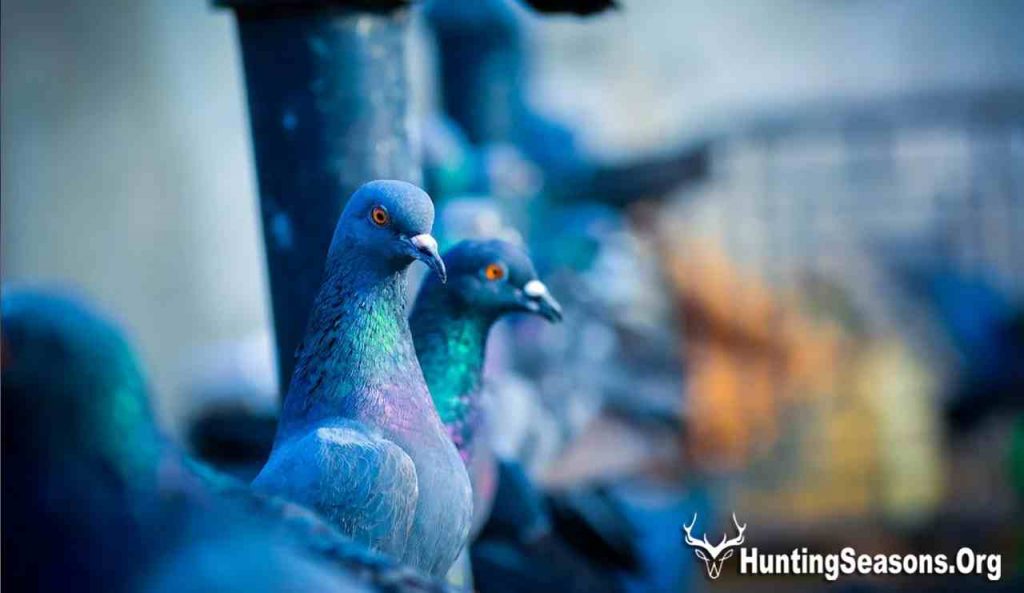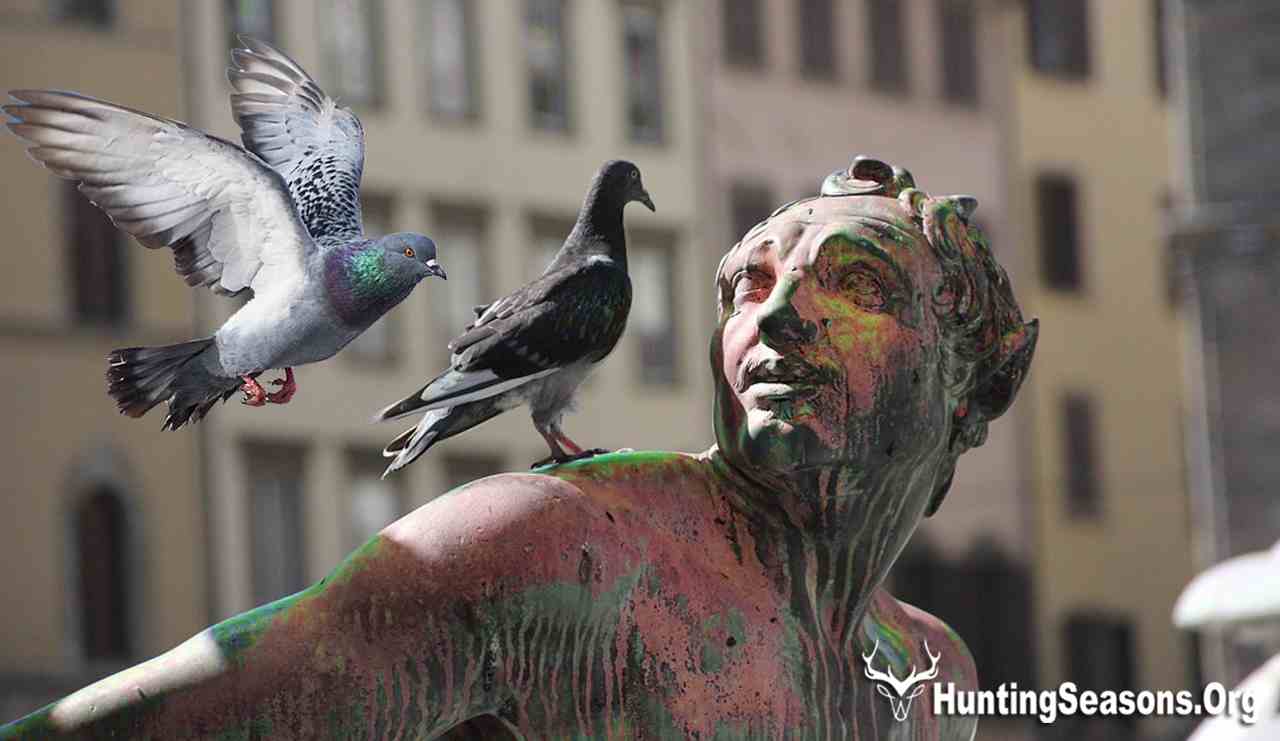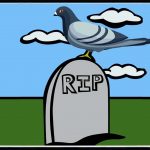The passenger pigeons were once North America’s most populous bird, numbering over billions. However, by 1914, the species was completely extinct in the wild. The shocking demise of the passenger pigeon is one of the most dramatic examples of human-caused extinction. In this page, we will explore the natural history of the passenger pigeon and the multiple factors that led to its rapid extinction.
Reasons for the Extinction of the Passenger Pigeon
The passenger pigeon declined rapidly from billions to extinction within a few decades. What happened to this seemingly endless population? There were multiple interacting causes that led to the demise of the passenger pigeon:
Commercial Hunting
- Widespread hunting was the primary factor that decimated populations.
- Passenger pigeons were viewed as agricultural pests and hunted commercially to control populations.
- Advances in mass hunting technologies allowed each hunter to kill thousands of birds per day.
- Most of the birds were shot during migration, reproductive, and winter roosting periods.
- Hunters used traps, ropes, nets, and sticks coated in sulfur to kill tens of thousands of birds at one time.
Habitat Loss
- Widespread logging of old-growth forests in the late 1800s destroyed nesting habitats.
- Passenger pigeons required large tracts of mature oak and beech forests for breeding colonies.
- As nesting sites disappeared, it reduced the overall carrying capacity for the remaining populations.
Reduction of Mast Foods
- Logging and land clearing reduced availability of beechnuts, acorns, and other mast foods passenger pigeons relied on.
- This likely increased competition for limited food resources during migration and winter.
Disturbance of Breeding Colonies
- Nesting colonies were highly vulnerable to disturbance, causing adults to abandon eggs and nests.
- There are accounts of mobs of people descending on breeding sites and causing chaos that disrupted breeding.
Rapid Population Decline
- As the overall population declined, it became harder for remaining birds to locate mates and sustain breeding.
- Small populations are more vulnerable to inbreeding depression and loss of genetic diversity.
- Extinction vortex sets in as factors reinforce each other, accelerating decline.

Timeline of Extinction
To illustrate the abruptness of the passenger pigeon’s extinction, here is a timeline of key events:
- 1800s: Population estimated at 3-5 billion birds across eastern North America.
- 1850s: Populations begin rapid decline, but still number in the hundreds of millions.
- 1870s to 1880s: Widespread commercial hunting escalates, killing millions of birds each year. Remaining population estimated to be in the millions.
- 1890s: Habitat loss and hunting pressures continue. One of the last major nesting colonies observed in 1896, numbering over 100,000 birds.
- 1900: Only a few scattered reports, some anecdotal. One reliable sighting of a lone male bird shot in 1901.
- 1910: Last captive passenger pigeon dies at the Cincinnati Zoo, named Martha. She was 29 years old.
- 1914: Last confirmed wild passenger pigeon shot in Pike County, Ohio.
In the span of a few decades, the passenger pigeon went from one of the most abund
Overview of the Passenger Pigeon
Ectopistes migratorius, often known as the passenger pigeon, is a medium-sized pigeon that is native to North America. Some key facts about this iconic bird include:
- They lived in enormous migratory flocks numbering in the millions.
- Their primary diet consisted of beechnuts, acorns, berries, and seeds.
- Nesting occurred in loose colonies, with each pair laying a single egg.
- The nests were flimsy and made of small twigs.
- Passenger pigeons were highly social and nested in large communal breeding colonies.
- Some reports indicate flocks could darken the sky for days as they passed overhead.
At the time of European settlement, the passenger pigeon population was estimated at 3 to 5 billion birds. They were the most abundant bird species in North America, making up 25-40% of the total bird population at the time.
Role of the Passenger Pigeon in the Ecosystem
As a dominant bird species, the passenger pigeon played important roles in shaping forest ecosystems in eastern North America:
- Seed dispersers: Their flocks transported various seeds over long distances as they migrated between nesting and feeding sites. This facilitated forest regeneration.
- Nutrient transport: Their massive colonies deposited large quantities of droppings in nesting areas. This input of guano helped fertilize soils.
- Prey base: They served as a critical food source for many predators, including hawks, foxes, raccoons, bears, bobcats, and weasels.
- Forest disturbance: Their nesting colonies had local impacts on forest structure by breaking branches, limiting tree growth, and creating openings in the canopy.
The functional extinction of the passenger pigeon likely had ecological ripple effects by disrupting seed dispersal dynamics, nutrient cycling, and food chains. The loss of this keystone species removed a major component of eastern forest ecosystems.
ant bird species on the planet to extinction. The loss happened with astonishing speed and scale.
Could the Passenger Pigeon Have Been Saved?
In hindsight, the extinction of the passenger pigeon seems like a preventable tragedy. Could intervention have saved this iconic species? Potential conservation actions that might have made a difference include:
- Banning mass hunting: Prohibiting the unrestrained mass killing through legislation and enforcement.
- Establishing protected areas: Safeguarding large tracts of mature nesting forests.
- Captive breeding: Establishing aviaries to supplement wild populations through captive breeding programs.
- Educating the public: Outreach campaigns on the ecological roles of passenger pigeons.
- Controlling habitat loss: Policies limiting cutting of old-growth forests critical for breeding.
- Restricting disturbance: Banning access to sensitive nesting colonies during breeding season.
However, at the time, there was limited understanding of extinction threats and a lack of legal protections for wildlife. The conservation movement did not gain traction until the early 20th century, sadly too late for the passenger pigeon.
- Virginia Hunting Seasons 2024 Latest Dates & Regulations - July 22, 2024
- Georgia Hunting Season 2024-2025 [Updated Schedule!] - July 19, 2024
- 2024 Tennessee Hunting Seasons New Dates & Regulations! - July 11, 2024





